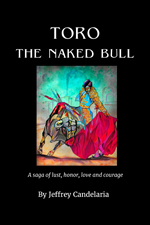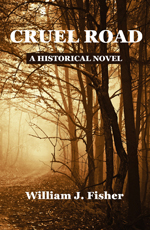Marcia Meier is an author and a poet, a developmental book editor and writing coach, and the publisher of Weeping Willow Books. She spent nearly twenty years as a newspaper journalist and has authored six books and numerous freelance articles and poetry. Her latest nonfiction release, Face: A Memoir (Saddle Road Press, January 2021), has been described as “a gut-wrenching and brave plumbing into a girl’s heart and soul, and a triumph of guts and the human spirit.” You’ll find Marcia on her website MarciaMeier.com and her Amazon author page.
 What would you like readers to know about Face?
What would you like readers to know about Face?
I wrote the book to process the trauma I experienced after I was hit by a car at the age of five and dragged down the street, losing my left cheek and eyelid. I subsequently had twenty surgeries over the next fifteen years, and struggled with disfigurement throughout most of my childhood. My hope is that people who read my story may be better able to confront and process any trauma they may have experienced.
What prompted the push to begin the project?
A midlife crisis, really. My life was falling apart: My marriage was crumbling, my business was faltering, and my mother, who lived with us, was struggling with health issues. After marriage counseling with my husband failed, I decided to continue therapy, which started an eight-year journey of going back in time to come to terms with, and heal from, the trauma I experienced.
Was there anything surprising or unexpected that happened as a result of writing the book?
Yes, I have been surprised and delighted by the book’s reception and the feedback I’ve received from so many readers who tell me it resonated with them in many ways. For that I am grateful. I have also been really surprised to feel re-traumatized by the publication, when I thought I had processed and healed from it all.
How did Face come together?
I started to write Face in 2005, when I first started therapy. But I had a hard time getting purchase on the story. So in 2010 I decided to go back to school to get my master of fine arts in creative writing. I had been a journalist in an earlier life, and knew that having a deadline to complete the project (my MFA thesis) would be the impetus I needed to finish a first draft. And it worked, but then I spent eight more years revising it (and two agent’s efforts to sell the book). Saddle Road Press Editor and Publisher Ruth Thompson offered a contract in early 2020, another gift for which I am eternally grateful.
During the process of writing your memoir, it must have been difficult to re-live your experiences. How did you work through those feelings and continue on?
As I mentioned earlier, I was very surprised at my emotional response to the book’s publication. I had read the first chapter many times before several audiences and was able to do so without feeling the deep emotions that arose. But when the book came out and I started to do readings of other parts of the book and discuss its implications with Zoom participants, I started to feel a little emotionally unsafe. I’ve had to do some deep soul searching about this, and I’m not sure I’m completely resolved even today.
Do you have a favorite quote from the book you’d like to share?
“What does it mean to find oneself? For me, it has meant pulling all my splintered pieces together and understanding how that splintering affected me. It feels like the end of a very long, difficult journey. But who can know what life will bring? Being aware means I can make different choices. Choices based on what’s in front of me and not on what happened five decades ago. I can choose to follow my own heart and not be swayed by what others might think of me.”
In a memoir based on memories of incidents that occurred in decades past, where does a writer’s responsibility lie: with the truth of the facts or with her perception/feelings about what occurred?
Both. Memoir is an accounting of what happened to you and how that experience changed or affected you. Essentially your reflection and perception of your emotional response to the tangible facts. Readers want to know what happened, yes, but also how you grew or managed to overcome the trauma. That’s when experience can be translated into universal understanding.
Besides being an author, you’re also an editor and a writing coach. What do beginning writers misunderstand about storytelling?
It’s not just about you, it’s about your readers and their experience in the reading of the story.
What does a typical writing session look like for you?
I don’t have any pat routine, mostly because my days are often dictated by client projects and deadlines. But one of my favorite things to do when time allows is to go to a local coffee shop and write in longhand. I find writing with pen and paper in an environment away from my work space is the most conducive to creative output.
What writing projects are you working on now?
I’m working on two projects right now: a novel I’ve been doodling with for years, and a book of prayers, poetry, and short essays entitled A Writer’s Book of Prayers, Inspiration for Scribes and Other Creatives. I’m anxious to finish the book of prayers; it’s almost there.
Is there anything else you’d like readers to know?
Thank you!
 KL Wagoner (writing as Cate Macabe) is the author of This New Mountain: a memoir of AJ Jackson, private investigator, repossessor, and grandmother. Kathy posts to a speculative fiction blog at klwagoner.com and writes about memoir at ThisNewMountain.com.
KL Wagoner (writing as Cate Macabe) is the author of This New Mountain: a memoir of AJ Jackson, private investigator, repossessor, and grandmother. Kathy posts to a speculative fiction blog at klwagoner.com and writes about memoir at ThisNewMountain.com.













